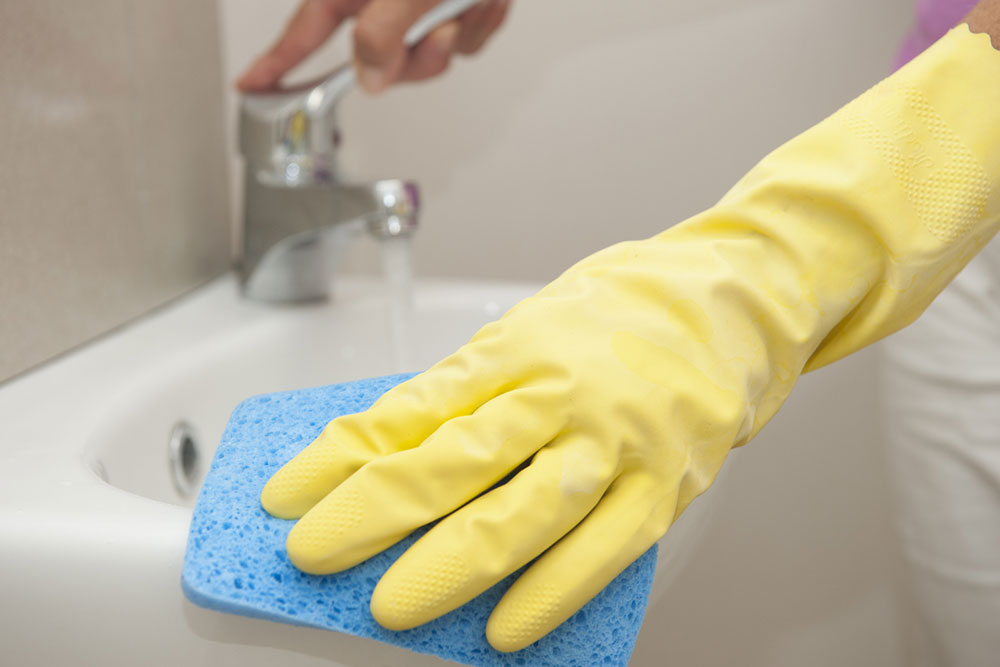10 bathroom cleaning mistakes and tips to fix them

Maintaining a pristine bathroom can be challenging. It’s a space where cleanliness and hygiene are paramount, as it is used daily and is a breeding ground for germs, bacteria, and odors. However, many people unknowingly make common bathroom cleaning mistakes that can compromise the sanitation of this space. But there are simple ways to avoid these errors; following them can drastically change one’s cleaning game. Here are some mistakes and solutions to ensure optimal hygiene.
Neglecting regular cleaning
Bathrooms are high-traffic areas and require frequent attention. Failing to clean these spaces regularly can lead to grime, mold, and bacteria buildup, which can be challenging to remove later.
Solution
Establish a regular cleaning schedule. Aim to clean the bathroom at least once a week, and consider daily maintenance tasks such as wiping down surfaces and regularly emptying the trash.
Using harsh chemical cleaners
Many assume stronger chemicals mean better cleaning, but this is not always true. Using harsh chemicals, especially in enclosed spaces like bathrooms, can harm one’s health and the environment and damage surfaces and fixtures.
Solution
Opt for milder, eco-friendly cleaning products that are designed for bathroom use. Natural ingredients like lemon, baking soda, and vinegar can work wonders without posing health risks.
Using dirty cleaning tools
Dirty cleaning tools can become a breeding ground for bacteria. Using these tools can spread germs and dirt instead of removing them, making one’s bathroom less sanitary.
Solution
One should wash or replace cleaning tools like sponges, rags, or mop heads, especially if they show wear and tear, give out unpleasant odors, or lose effectiveness.
Neglecting tile walls
Over time, tile walls can accumulate soap scum, mildew, and grime, affecting the overall cleanliness and appearance of the bathroom.
Solution
Include tile walls in one’s cleaning routine. One can mix equal parts water and white vinegar in a spray bottle, spritz the solution to the tiles, clean with a sponge or a soft brush, and rinse with water for a sparkling finish.
Ignoring ventilation
Proper ventilation is crucial in a bathroom. Failing to do this can lead to excess moisture, which promotes mold and mildew growth. Additionally, inadequate ventilation can trap unpleasant odors.
Solution
After showering, one should ensure the bathroom has a functional exhaust fan or open windows and doors to let out moisture. This will help prevent mold and mildew while keeping the air fresh.
Neglecting shower curtains and mats
If left unattended for an extended period, shower curtains and bath mats can harbor soap scum, mold, and mildew. This makes them unsanitary and dirty.
Solution
Most shower curtains and bath mats are machine washable, so a simple wash cycle can keep them clean and fresh.
Not cleaning toilet flush and faucet handles
Neglecting to disinfect frequently touched surfaces like toilet flush handles and faucet handles can contribute to spreading germs.
Solution
Regularly disinfect these high-touch areas to maintain a hygienic bathroom environment. One can also consider using disposable disinfectant wipes to clean these quickly and conveniently.
Using a single cleaning product for everything
Using a single cleaner for all surfaces can be ineffective or damaging, as not all bathroom surfaces are the same. For example, abrasive cleaners intended for tile may harm more delicate surfaces like marble or glass, potentially causing scratches or dulling their appearance.
Solution
Invest in specialized cleaners for different surfaces, such as glass, tile, and porcelain, to achieve the best cleaning results without causing harm.
Overlooking hidden spots
Bathrooms have numerous nooks and crannies that are easily overlooked during cleaning. Commonly forgotten areas include behind the toilet, under the sink, and inside cabinets.
Solution
One can write one checklist of often-neglected spots and address them during each cleaning routine. Appropriate tools like brushes and extendable dusters can help reach these hidden areas.
Using a dirty toilet brush
Ironically, the tool meant to clean the toilet can become one of the dirtiest items in the bathroom if not correctly maintained.
Solution
After each use, one is advised to rinse the toilet brush thoroughly and allow it to dry. Additionally, one can disinfect it regularly by soaking it in bleach and water.
Creating a plan to avoid common mistakes while cleaning the bathroom can result in a cleaner and more hygienic space.

